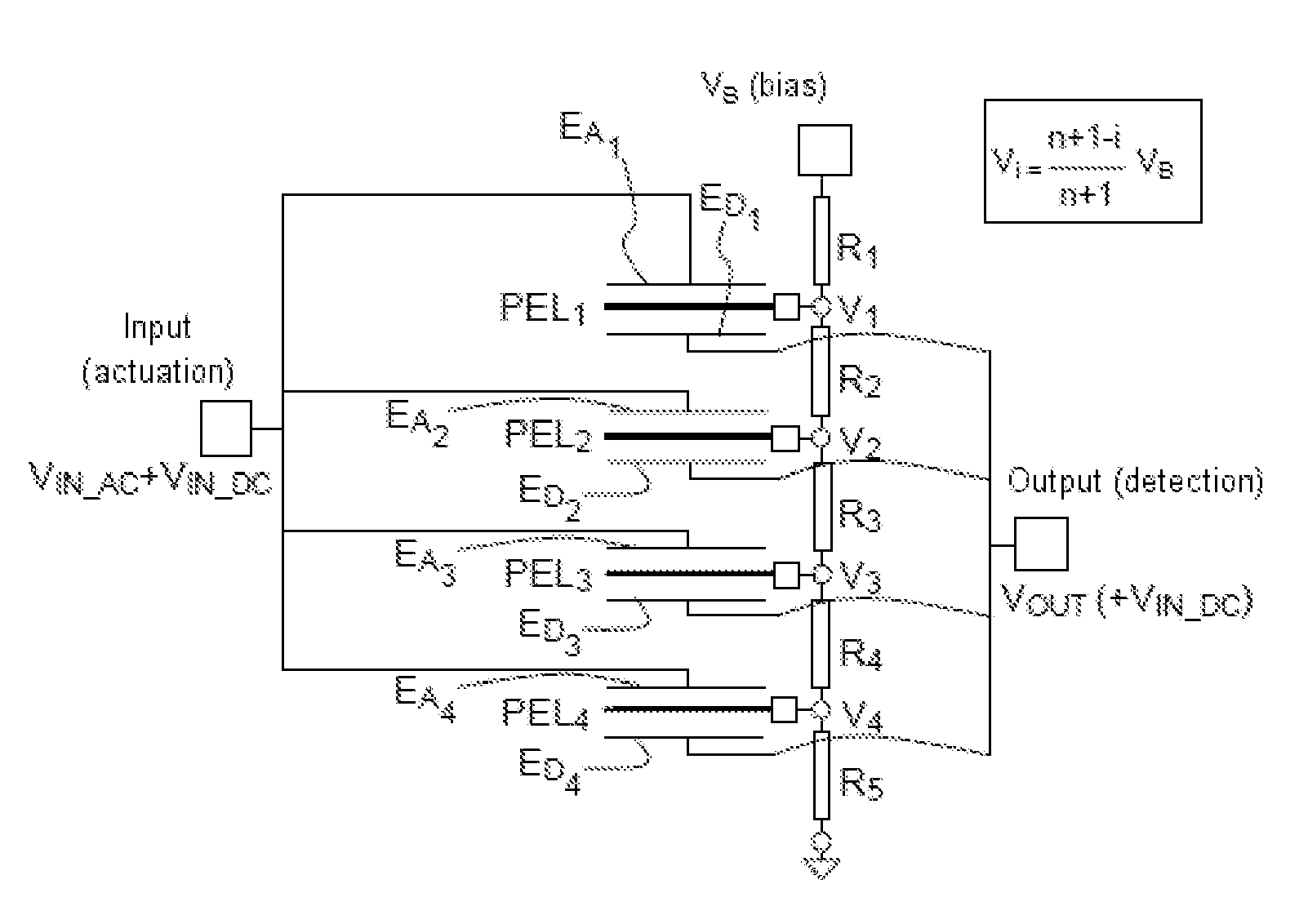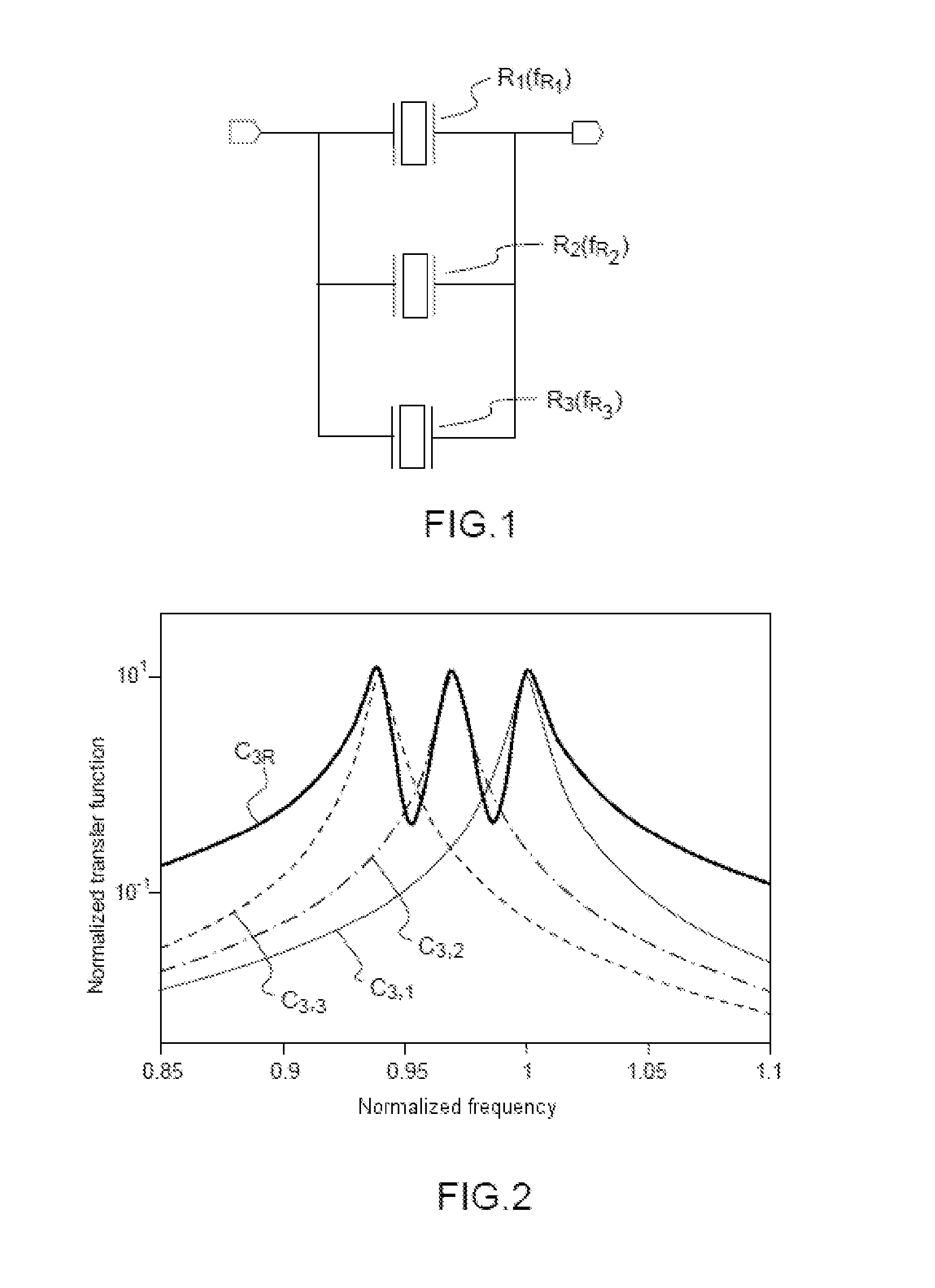Mems/nems device comprising a network of electrostatically actuated resonators and having an adjustable frequency response, notably for a band-pass filter
a technology of electrostatically actuated resonators and electromagnetic devices, applied in the direction of impedence networks, electric devices, etc., can solve problems such as disadvantages, and achieve the effect of simplifying design
- Summary
- Abstract
- Description
- Claims
- Application Information
AI Technical Summary
Benefits of technology
Problems solved by technology
Method used
Image
Examples
first example
[0085 Device According to the Invention
[0086]By way of example, FIG. 5 illustrates one embodiment of the invention with VB2=0 and with a network of n resonators Pi incorporating piezoresistive gauges or being coupled to piezoresistive gauges (not shown) and electrically connected in series between the potential VB and ground. This array of resonators may advantageously be mounted in series with a single biasing resistor or a set of resistors, having a total resistance of n×R, allowing the piezoresistive detection to be achieved via measurement of variations in the resistance of the whole of the network. The detection output potential is then: VB / 2+VOUT—AC. The choice of the resistance n×R of the biasing resistor allows the voltage gain of the network of resonators to be optimized. This configuration is equivalent to a conventional half-Wheatstone bridge configuration.
[0087]According to this example, n resonators are actuated by controller electrodes EAi connected to a common input p...
third example
[0093 Device According to the Invention
[0094]According to this example, which is illustrated in FIG. 7, the beams are cantilever beams i.e. beams that are fixed only at one of their ends and not fixed at both their ends as in the example illustrated in FIG. 6. FIG. 7 schematically shows one example with 4 beams PEL1, PEL2, PEL3 and PEL4, coupled to 4 actuation electrodes EA1, EA2, EA3 and EA4; FIG. 7 also shows elements R1, R2, R3, R4 and R5 (corresponding to resistors present between the various nodes of potentials Vi) and the potentials along the series of said cantilever beams mounted in series. By way of output, 4 electrodes ED1, ED2, ED3 and ED4 dedicated to detection are connected to a common output potential, the AC portion of which is VOUT (the detection signal), the DC portion advantageously being fixed at VIN—DC (in order to equalize the DC voltage exerted by the two types of electrodes on the beam).
[0095]Example of Implementation of the Invention with a Network of Plate R...
PUM
 Login to View More
Login to View More Abstract
Description
Claims
Application Information
 Login to View More
Login to View More - R&D
- Intellectual Property
- Life Sciences
- Materials
- Tech Scout
- Unparalleled Data Quality
- Higher Quality Content
- 60% Fewer Hallucinations
Browse by: Latest US Patents, China's latest patents, Technical Efficacy Thesaurus, Application Domain, Technology Topic, Popular Technical Reports.
© 2025 PatSnap. All rights reserved.Legal|Privacy policy|Modern Slavery Act Transparency Statement|Sitemap|About US| Contact US: help@patsnap.com



